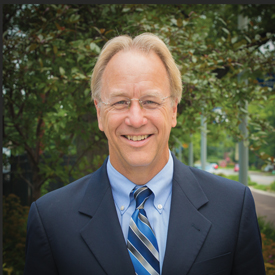-by Brian Payne
president and CEO of CICF
and president of The Indianapolis Foundation
 Nothing extraordinary ever happens without someone reaching past the constraints of the current reality to ask, “What if…?” I spend a lot of time thinking about these things, and so does Central Indiana Community Foundation (CICF). What if Indianapolis and central Indiana were the best city and region in the country at ….?
Nothing extraordinary ever happens without someone reaching past the constraints of the current reality to ask, “What if…?” I spend a lot of time thinking about these things, and so does Central Indiana Community Foundation (CICF). What if Indianapolis and central Indiana were the best city and region in the country at ….?
What if we created a Personal Mobility Network that connected people to services and opportunities through various integrated modes of transportation? What if we rebuilt highways to be inclusive of neighborhoods, instead of disruptive? What if art, nature and beauty were accessible to everybody, every day? What if we dismantled systemic racism? What if we were a community that nurtured every person’s innate talent or super power?
What if our built environment was always designed to enhance our lives and aspirations? What if development was done with the community, instead of to the community?
It is not standard design practice for a developer to partner with a not-for-profit community foundation and the residents that live in the community, but what if it was?
Not all big ideas are created equal. It’s easy to be seduced by design, efficiencies and cost-cutting that is not driven by inclusion and equity from the start. In Indianapolis’ 199 years as a city, we’ve often let our process of development be uninformed by the culture, heritage and needs of the people who live in neighborhoods. And we at CICF, with more than 100 years of investments in the city, haven’t always gotten it right either. We’re asking the question with more intention now, and we are trying hard to make it a habit of asking the people who are most affected by change what do they want and need to thrive in our city.
That’s how our partnership with Ambrose Property Group began, as a community advisor and placemaking partner for its redevelopment of the 103-acre GM Stamping Plant campus, now named Waterside. From conception, CICF has come alongside Ambrose to be intentional about engaging the community that already lives in The Valley, which is adjacent to Waterside and home to hundreds of residents. It is not standard design practice for a developer to partner with a not-for-profit community foundation and the residents that live in the community, but what if it was?
Again, what if we asked the residents what they wanted?
Because designing for equity has been the goal of Waterside from the beginning, we have an opportunity to do things with integrity, purpose and authenticity. We are asking the existing neighbors lots of questions and listening carefully.
What if we could create a community space for residents to engage with world-class art? What if we created safe and protected bike lanes to expand accessibility to the downtown corridor? What if we activated the White River in a way that serves residents, both old and new, and served people of all income levels? What if we created a new Cultural District that enabled residents to access all of their daily necessities within a 20-minute walk? Again, what if we asked the residents what they wanted?
We have an opportunity with this project to do something really bold and innovative: to design with equity and inclusion at the core, rather than colonize a neighborhood or doing something symbolic so we can check the box on diversity this or equity that. What if this development becomes the model for others in the city to follow and other cities to admire and celebrate? CICF and GM Stamping Plant have 100-year-old histories, but that history does not define us. CICF, Ambrose and the Waterside development will be newly defined by our behavior and actions now and into the future.






thank you for this thinking. some additional questions that also came to mind:
1. what if we could ensure those most historically and adversely impacted by a community innovation are centered in vision creation and decision making?
2. what if we could introduce city amenities in ways that logistically support, aesthetically represent, and are responsive to current and future residents?